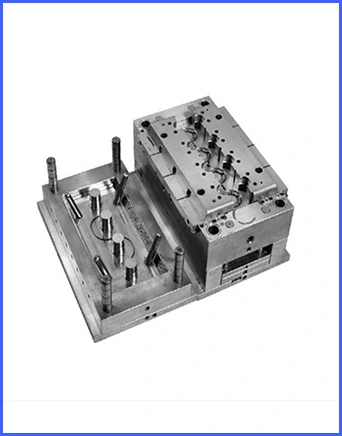Time to read: 6 min

Injection molding is a cornerstone manufacturing process for creating plastic components with speed and efficiency. While it inherently produces parts with a natural surface finish suitable for many applications, the diverse needs of industries often demand specialized surface finishes. This guide explores the spectrum of surface finish options, from glossy to textured, and the strategic choices that can enhance both the appearance and performance of injection-molded parts.
Customizing Surface Finishes for Injection Molded Parts
The surface finish of an injection-molded part can significantly influence its visual appeal, functionality, and even its structural integrity. For some products, a smooth, glossy finish is desired to achieve a high-end look, while others may opt for a textured surface to enhance grip or durability.
Understanding SPI Surface Finish Standards
The Society of Plastic Industry (SPI) has set forth 12 standard surface finish types, categorized into four groups that range from very smooth to rough. These classifications are crucial for manufacturers to communicate the desired finish effectively and ensure consistency across production runs.
SPI Surface Finish Types:
- Grade A: The glossiest finish, ideal for parts requiring a mirror-like appearance.
- Grade B: A semi-glossy finish that offers a subtle sheen suitable for consumer products.
- Grade C: A matte finish that provides a non-reflective surface, perfect for parts not requiring a glossy look.
- Grade D: A textured finish that can increase friction or hide surface imperfections.
Factors Influencing Surface Finish Quality
Several factors come into play when determining the final surface finish of an injection-molded part:
-
Tooling Material: The type of metal used in the mold can affect the smoothness of the finish. Hardened tool steel generally produces the smoothest finishes.
-
Material Selection: Different plastics have varying capabilities when it comes to achieving specific finishes. Some materials are more conducive to glossy finishes, while others are better suited for textured ones.
-
Process Variables: Injection speed and melt temperature can influence the glossiness and the visibility of weld lines, with faster injections and higher temperatures generally promoting smoother finishes.
-
Functional Requirements: Beyond aesthetics, surface finishes can serve functional purposes, such as improving paint adhesion, enhancing grip, or increasing part strength.
Unofactory’s Commitment to Quality
At Unofactory, we pride ourselves on offering top-tier injection molding services that combine a wide array of materials with expert craftsmanship. Our understanding of the nuances involved in achieving various surface finishes ensures that your parts meet the highest quality standards.
Strategic Selection of Materials for Surface Finish
We provide recommendations on the most suitable materials for each SPI finish designation, ensuring that your choice aligns with the desired outcome, whether it be for aesthetic or functional reasons.
The Role of Surface Finish in Part Functionality
Choosing the appropriate surface finish goes beyond aesthetics; it plays a critical role in the part's performance and durability. Textured finishes, for instance, can improve paint adhesion and provide a better grip, while smoother finishes may be necessary for parts that require a polished look.
Conclusion:
Selecting the right injection molding surface finish is a strategic decision that impacts the look, feel, and performance of your plastic parts. It's essential to make this choice early in the design process to ensure that it aligns with your tooling, material, and manufacturing decisions. Unofactory is here to guide you through this process, providing expert advice and top-quality services to bring your vision to life.




